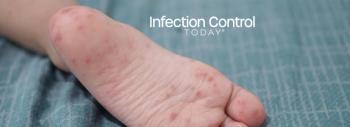
Prior Dengue Infection Protects Against Zika
The higher a person’s immunity to dengue virus, the lower their risk of Zika infection, an international team of scientists led by the University of Pittsburgh Graduate School of Public Health, Yale School of Public Health and University of Florida report today in the journal Science.
The study â which followed nearly 1,500 people living in a poor neighborhood at the heart of the 2015 Zika outbreak in Brazil â also provides evidence that Brazil’s Zika epidemic has largely petered out because enough people acquired immunity to reduce the efficiency of transmission.
“Take that with a grain of salt, though,” said co-senior author Ernesto T.A. Marques, MD, PhD, associate professor in Pitt Public Health’s Department of Infectious Diseases and Microbiology and public health researcher at Fundação Oswaldo Cruz in Brazil. “Our study was in a very small urban area, and it is likely that in other parts of Brazil, even different neighborhoods within the same city, people are still susceptible to Zika infection.”
The discovery relied on tests for dengue and Zika developed by Marques and his team and patented by Pitt. Marques is scientific director of Cura Zika, an international alliance to spur research into Zika, microcephaly and other congenital conditions it causes in babies.
The research team tapped into a long-running study of the health of people living in urban slums in Salvador, a city in northeast Brazil, led by co-senior author Albert Ko, MD, chair of epidemiology at the Yale School of Public Health. Study participants gave multiple blood samples before, during and after the Zika epidemic. Samples collected in October 2014 and March 2015 were almost entirely negative for Zika, but by October 2015, 63 percent showed evidence of Zika infection.
Before the Zika outbreak, a subset of 642 participants also had been tested for previous dengue infection, and 86 percent were positive. Specifically, the test assessed the level of antibodies the participants had in their blood against dengue. The team found that each doubling of dengue antibody levels corresponded to a 9 percent reduction in risk of Zika.
“This means that there are some cross-protective antibodies that dengue provides against Zika,” said Marques. “Future study may be warranted to assess whether the new dengue vaccines could be useful in preventing Zika infection.”
Paradoxically, computational models by co-senior author Derek A.T. Cummings, PhD, professor of biology at the University of Florida, revealed that participants who had a very recent dengue infection were actually more susceptible to Zika.
The scientists suspect several possible explanations: It could be that protective antibodies haven’t developed yet or there’s something about these people’s immune systems that increases their risk of contracting Zika. And the mosquitoes that transmit dengue also transmit Zika, so a recent dengue infection could simply mean they are in a place where Zika transmission is active as well.
Additional study also is needed to determine how these findings could prove useful to clinicians, Marques said.
Developing reliable, commercially available tests for women of child-bearing age to assess their previous dengue and Zika exposure is of immediate concern, along with evaluating recommendations so clinicians know what to do with that information, noted Marques. Testing could help clinicians determine whether vaccinating women against dengue could help protect them from Zika during pregnancy. It also would give a baseline, so obstetricians would know how closely to monitor a pregnant woman’s fetus for microcephaly, based on her susceptibility to Zika.
Ongoing studies also are following babies born to women who contracted Zika during pregnancy to assess the effect of the mother’s immunity to dengue on the degree of Zika-related congenital conditions in the babies.
Co-lead authors on this research are Eduardo J.M. Nascimento, PhD, Pitt’s Center for Vaccine Research; Isabel Rodriguez-Barraquer, MD, PhD, the University of California San Francisco; and Federico Costa, PhD, Yale.
Additional institutions that participated in this research are the Universidade Federal da BahÃa in Brazil; Universidade de Pernambuco in Brazil; University of Texas; Sustainable Sciences Institute in Nicaragua; Ministry of Health in Nicaragua; University of California Berkeley; and Faculdade de Medicina de São Jose do Rio Preto in Brazil.
Source: Health Sciences at the University of Pittsburgh
Newsletter
Stay prepared and protected with Infection Control Today's newsletter, delivering essential updates, best practices, and expert insights for infection preventionists.






